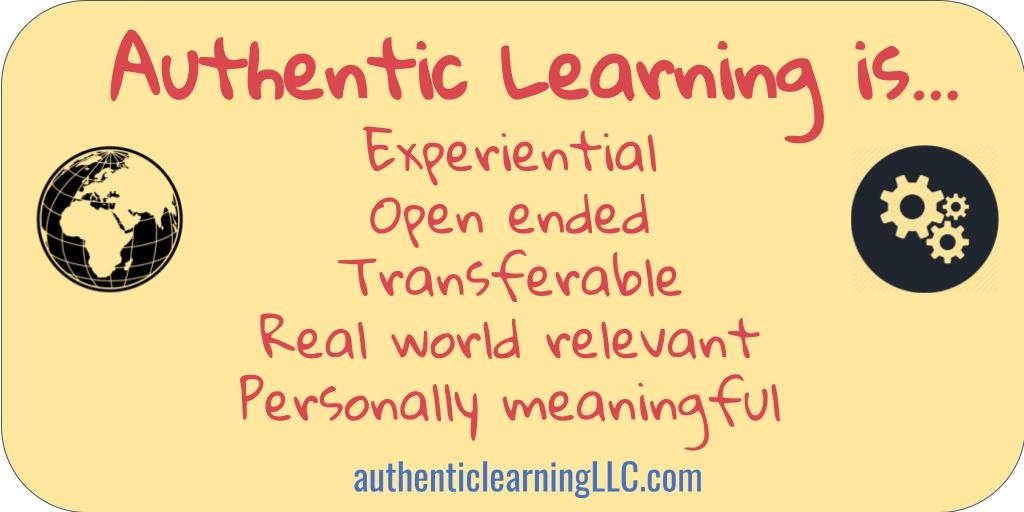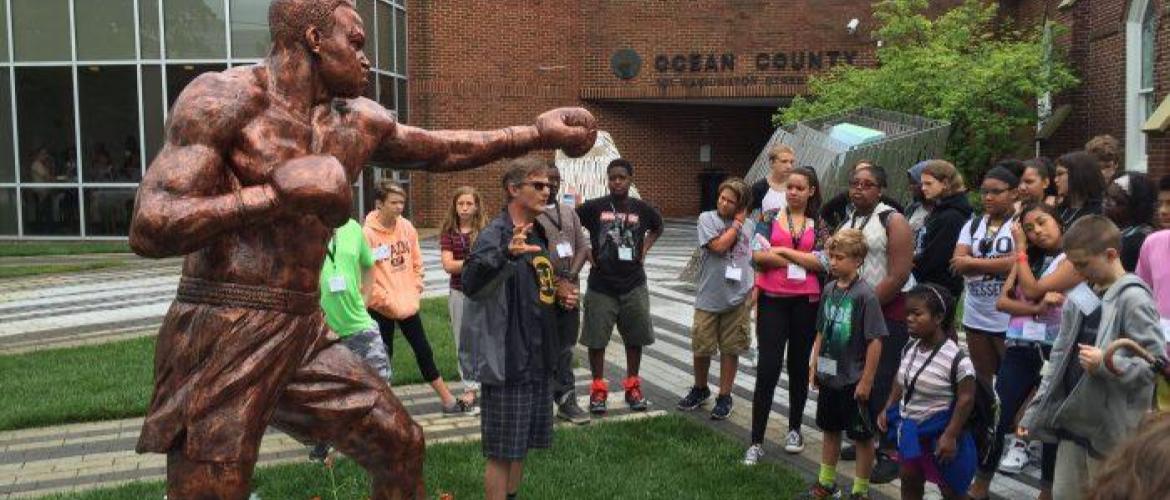Makercampers meet world-renowned sculptor Brian Hanlon to discuss his techniques, understand his inspiration, and heed his career advice as an artist: “You also have to be an accountant.”
What it means to be authentic in education, and why it matters.
Innovation takes place outside the box and sometimes outside the budget.
In 2016, I designed a program that resulted in a $100,000 grant from the Department of Ed to help low income, low performing middle school students stem “summer loss.” That’s the backslide in learning many children experience– especially those who don’t have access to enriching opportunities– that can cause them to start the new school year behind where they were in June.
The program was a summer makercamp, each week with a different theme, different authentic challenge, and different build: a coastal park, a weather-resistant structure, a hacked toy for the disabled. I incorporated just about every technique and strategy I believed could improve learning but lacked the funds or freedom to try.
As the six weeks progressed, it became clear that our 75 students were enthused and engaged. Daily attendance was near 100% and the projects they developed blew our minds. Data collected during the school year would show that the learning bump they experienced endured. One student went on to become her middle school valedictorian.
Engagement is rooted in the authentic nature of the activities.
Authentic learning is an instructional approach that focuses on experiences, relevance, and practical applications. Issues come from the real world. Students identify and pursue problems of interest to them. Questions are more open ended. Students do, rather than just watch or listen. One “flavor” of this approach that’s becoming popular is place-based education, which particularly focuses on local culture and community.
Our third week of camp focused on the power of art to impact social justice. One student crafted a graffitied cardboard wall, both literal and abstract, at a time when building walls was a contentious societal topic. A guest who attended our gallery walk was so moved by the student’s articulation of and personal connection to the issue that she asked her to join a diversity panel for her foundation.

How often are students given the opportunity to design their own activity?
One size does not fit all in classrooms. Authenticity should also mean individualization. Each activity should have multiple entry points and feel relatable. I’ve had many opportunities to test and share these principles and it comes down to this: our world needs involved citizens who can think critically and problem-solve with empathy and through collaboration. The skills and knowledge in our lessons should be applicable outside of the lesson. At a class I taught recently on this topic, a teacher stated, “I can tell if my students have mastered my content if they use what they learned in some other area of their lives.”
Education’s other two legs
A piece of furniture should have, at minimum, three legs to be stable. Authentic learning is only one leg of effective teaching. Active learning and personalized learning are the other two. For me these have always been a package deal. Yet they are different and it’s worth clarifying each.
- Authentic learning, as detailed above, is the selection of content and skills that are geared toward real life applications.
- Active learning is a teaching approach (pedagogy) that asks students to engage directly with course material through discussions, problem solving, case studies, role plays and other methods. Students actively construct their own knowledge, explore attitudes and values, improve metacognition, and use higher order thinking.
- Personalized learning makes students the center of both content choice and pedagogy. Experiences are customized to the learner and are typically open ended. Because they address the distinct learning needs, aspirations, and cultural backgrounds of individual students, the approach is a powerful driver of equity.
A lesson could be any combination of the three. One is not dependent on another. For example, an activity could connect students with an authentic community issue (like poverty) but the lesson style could be passive, e.g. a teacher lecture or a reading, and whole class, rather than individualized. The most powerful lessons are authentic, active, and personalized. I’ll provide more detail on the latter two in future blogs.
Unprecedented times demand new ways of thinking.
We have many issues to resolve, but at a minimum, our kids need to engage in high interest and relevant work that has personal meaning, now more than ever. They can, should, and deserve to have a voice in their learning. Whether face-to-face or virtual, that’s what authentic learning can create in our classrooms.
⚙ Dr. Marc
Who doesn’t want to become their authentic self? We should feel the same about our work. If you have a friend or colleague who speaks this kind of language, or would benefit from hearing it, feel free to forward this post.
©2020 Marc Natanagara, Ed.D. All rights reserved. Reprinted with permission. This article and other resources available at authenticlearningllc.com
When duplicating this post in any form, please make sure to include the attribution above.
⚙ August 2020


